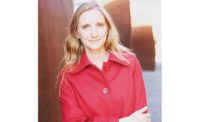ENR 2020 Top 25 Newsmakers
Monzer Hourani: Shepherded Filter That Zaps Coronavirus from Brainstorm to Deployment

Hourani’s crusade to reopen America began on March 27 with an idea for a filter that would use heat to kill the virus.
PHOTO COURTESY MEDISTAR

Hourani’s crusade to reopen America began on March 27 with an idea for a filter that would use heat to kill the virus. By September, mobile units (above) were on their way to buildings.
PHOTO COURTESY IVP


Last March, when COVID-19 was reaching pandemic proportions, Monzer Hourani was 76 years old—an age well past retirement for many. Not so for the medical real estate developer whose company, Medistar Corp., had a roster of projects underway that would have overloaded a person half his age.
To top that off, when the pandemic hit, the self-acknowledged workaholic, also an inventor, was deep into developing a pollution control system that reduces a vehicle’s carbon emissions.
All that halted on March 27, when Hourani had a brainstorm for a coronavirus-killing indoor air filtration system, now named the Biodefense Indoor Air Protection System. The real estate mogul became hyper-focused on turning his concept into reality.
His goal: to free the world from the tyranny and shackles of COVID-19 and future pandemics through science and engineering. “I want to reopen America,” says Hourani, chairman of the board of Integrated Viral Protection (IVP), a company he formed—initially fueled by “millions of dollars” of his personal fortune—to rev up the filter’s manufacture and deployment.
IVP is moving ahead at warp speed to get the airborne pathogen slayer deployed—anywhere. But Hourani knows he needs a broad coalition, headed perhaps by a national COVID-19 czar, to reach his goal. Toward this end, last year, public health expert Kenneth Thorpe, executive director of the Emory University Institute for Advanced Policy Solutions, initiated meetings with President-elect Joe Biden’s team. “The filter is revolutionary,” says Thorpe, also a professor of public health. “It has economic importance and will have an impact on morbidity and mortality.”
Hourani’s main collaborators on the invention are scientists at the University of Houston, Zhifeng Ren and Luo Yu, a postdoctoral fellow. Both are named as co-inventors on the filter’s patent application. “Monzer wants to help society,” says Ren, a physics professor and director of the Texas Center for Superconductivity. “This invention is very significant,” he adds.
Able to catch and kill viruses and microbes as small as 100 nanometers or as large as 1,000 nanometers, the filter uses principles of conductivity to zap airborne pathogens, including anthrax spores, legionella bacteria and allergens. The filter heats the air to 350° F. Yet its nickel foam mesh has no significant impact on the ambient air temperature.
The IVP filter differs from most others because it traps and kills the virus and was peer-reviewed. Ultraviolet light also kills the virus, but UV overexposure poses a danger to humans, says Hourani, who also encourages vaccinations, wearing masks and social distancing.
Last year, there were more than $4 million in filter sales. Orders this year have already surpassed $4 million. To meet growing demand, IVP is negotiating agreements with manufacturers in and outside the U.S. and is expanding production at the first three filter plants, one each in the U.S., Canada and Mexico.
The list of installations—either mobile units; heating, cooling and ventilating system filters; or a combination—is growing. As of earlier this month, the filter was in more than 40 hospitals and two convention centers. It is in more than 150 schools in Texas and Florida.
Two major hotel chains use it, as well as early childhood development centers, restaurants, banks, religious buildings and prisons and jails. There are installations in 15 nursing homes in Texas, over 10 municipal buildings and new student housing for 2,200 in Dubai. Soon, Phoenix’s Sky Harbor International Airport will be the first airport to adopt the system, says Hourani.
IVP is tracking COVID-19 in many “filter buildings.” Schools are reporting fewer cases of the illness in locations where the filters are deployed, says Garrett Peel, managing director of IVP.
Hourani, who got his first dose of the vaccine late last year, is concerned about a vaccine-resistant mutation of the virus. That’s why he won’t rest until he adds other forms of the filter. Coming soon are a portable unit that fits in a backpack and a face shield.






